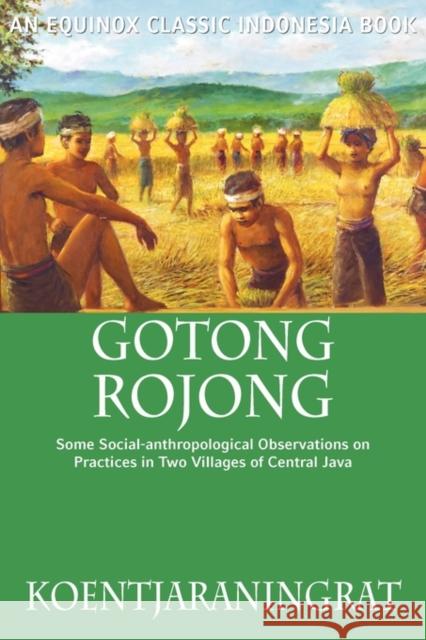Gotong Rojong: Some Social-anthropological Observations on Practices in Two Villages of Central Java » książka
Gotong Rojong: Some Social-anthropological Observations on Practices in Two Villages of Central Java
ISBN-13: 9786028397278 / Angielski / Miękka / 2009 / 100 str.
Gotong Rojong: Some Social-anthropological Observations on Practices in Two Villages of Central Java
ISBN-13: 9786028397278 / Angielski / Miękka / 2009 / 100 str.
(netto: 181,69 VAT: 5%)
Najniższa cena z 30 dni: 177,57 zł
ok. 13-18 dni roboczych.
Darmowa dostawa!
One of the most important, and at the same time most abused, terms in the Indonesian language is gotong rojong. Originally its usage was confined to the village sphere of Indonesian society, but during the past decade it has acquired an increasing currency among Indonesian political leaders and economic planners concerned with national problems. More and more frequently it has been employed in the formulation of prescriptions for, social and political relationships transcending the village level. In most cases, its usage, whether pertaining to activity at the village or national level has been vague and certainly varied, few writers (scholars or political leaders) pausing to give it anything approaching a clear definition. Where it has been defined, this has all too often been largely in terms of ideological requirements rather than reflecting the actual practices, such as those that Dr. Koentjaraningrat describes.This is one of the very few studies of this important process in Indonesian society to be based upon careful field research, an investigation undertaken by Dr. Koentjaraningrat in Central Java in 1958 and 1959. Publication of his monograph reflects the Cornell Modern Indonesia Projects interest in the considerable changes that have taken place at the village level in Indonesia as a consequence of the impact of three and a half years of Japanese occupation, four years of struggle for independence, and the subsequent decade of rapid social, economic, and political movement. We feel that Dr. Koentjaraningrats study is a significant addition to the all too meager store of data based upon actual field work at the village level in the post-war period.Finally, I should like to express our deep gratitude to Mrs. Claire Holt for her translation of the manuscript, one which is fully sensitive to the nuances of Dr. Koentjaraningrats exposition. - George McT. Kahin December 8, 1961











